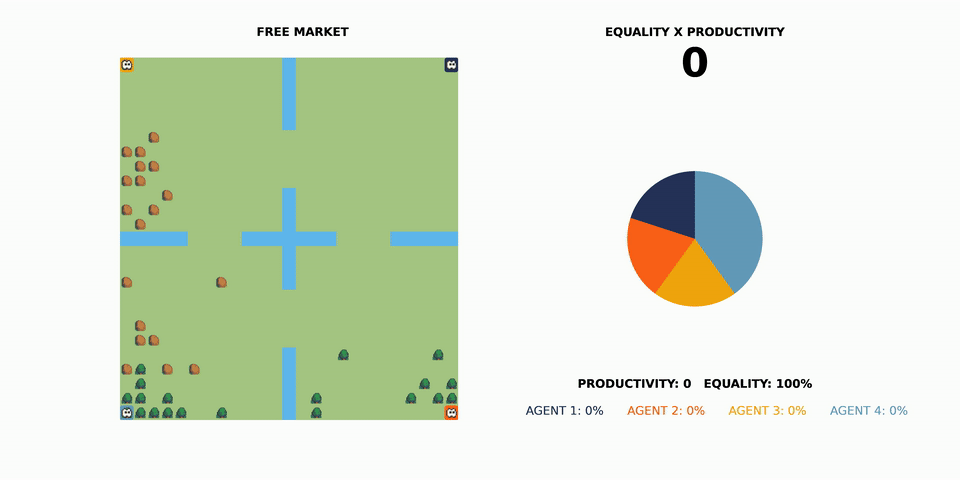Salesforce Research published a groundbreaking paper, The AI Economist: Improving Equality and Productivity with AI-Driven Tax Policies, which applies AI and reinforcement learning to create tax policy for the first time.
The Details
The AI Economist is a machine learning framework for economic design from Salesforce Research. It uses two-level multi-agent reinforcement learning (MARL) to train a “social planner” that sets taxes and subsidies in a simulated market economy that contains independently learning AI agents. The AI Economist will also be available as an open-source tool for developers and economists alike to help the models evolve and progress.
The Results
The results have been promising. In simulations The AI Economist achieves a 16% gain compared to the next best model, the Saez model. It also improves equality by 47% compared to the free-market at only an 11% decrease in productivity.
The Impact
The paper also explains how the model can help governments and other entities by adjusting specific economic levers (taxes, subsidies, etc.) to simulate how policies could play out over time, allowing more informed decisions while mitigating risks. The model can even account for tactics used to cheat or game the tax system like strategically reporting a higher income.

“Reinforcement learning has made a number of breakthroughs through game-playing, think Alpha Go for example,” said Salesforce Research team member Richard Socher. “However, in the end, games are just games — when chess was ‘solved,’ the rest of the world didn’t really change that much afterwards. If instead of playing games, we as AI researchers focus on improving the realism and scale of these economic simulations and the abilities of the AI agents and the AI Economist to improve the overall outcomes we can have a lot of positive impact.”
The Differentiator
It aims for an optimal balance of both equality and productivity. That’s one key difference about The AI Economist from many other AI/machine learning models and applications – The AI Economist isn’t interested in victory or vanquishing a foe. Its objective is to achieve a win-win scenario.
Sign up for the free insideAI News newsletter.





Speak Your Mind